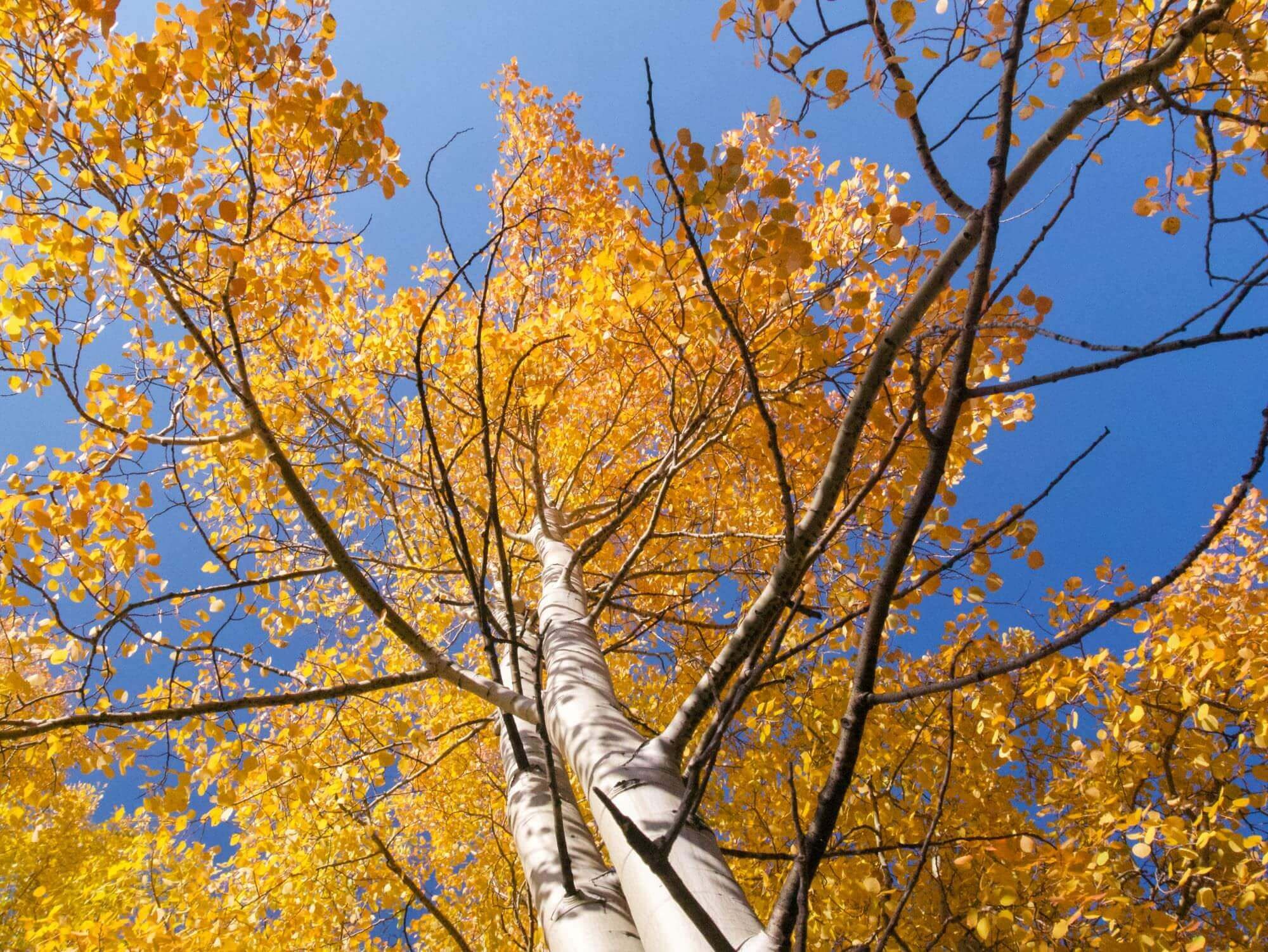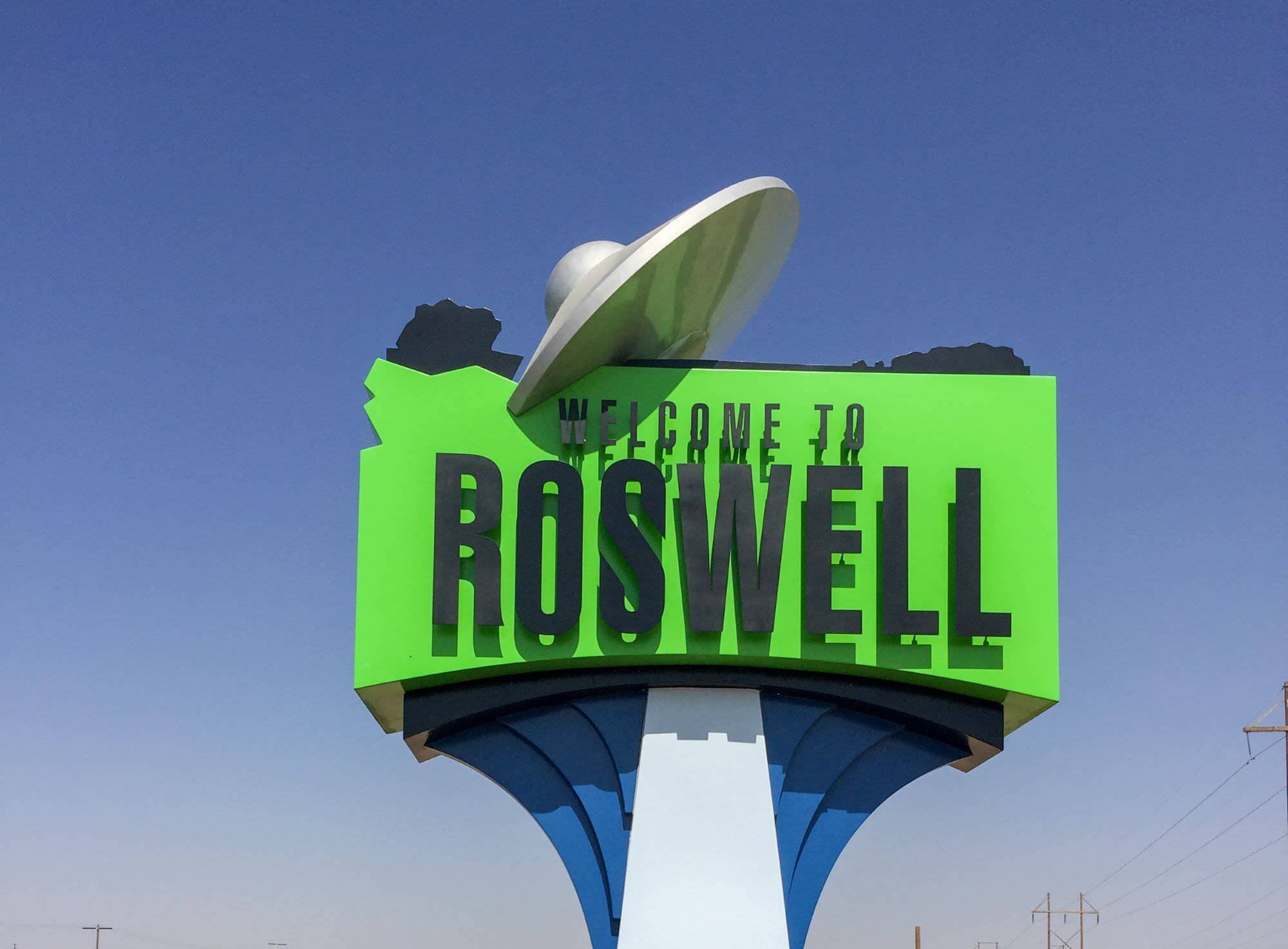The Unsung Hero: 10-Day New Mexico Road Trip
If New Mexico’s not on your travel wish list, consider this post your formal notification that it should be. We’re calling this road trip ‘The Unsung Hero’ because we think New Mexico deserves more credit as one of the most beautiful places to road trip in the US.
For stunning scenery, varied landscapes, tons of outdoor activity, and fewer crowds than most travel hot spots... It's time to put this 10-Day New Mexico Road Trip at the top of your list.
Here’s how to road trip New Mexico (and visit three national parks, including White Sands, Carlsbad Caverns, and Guadalupe Mountains) in 10 days!
As you can see in the Google Map above, New Mexico makes an especially great road trip for anyone living in Texas, Colorado, Utah, or Arizona. You can even add it to your Ultimate Colorado Road Trip.
Table of Contents Hide
Our 6-Week New Mexico Road Trip
Jon, Lincoln, and I started our New Mexico Road Trip in September 2020. After largely canceling our first full year of travel, we were looking for something to get us excited about making plans again and stumbled upon White Sands National Park.
New Mexico wasn’t on either of our lists as a must-do-soon travel destination, as there wasn’t really anything drawing our attention to the state in a big way. Nonetheless, I saw the pictures from White Sands National Park and was quickly sold. (Do a quick scroll for a few photos from White Sands, and you’ll see why!)
But despite the apparent beauty of White Sands, I still didn’t have high expectations for New Mexico… and I’m happy to admit I was quite misinformed. New Mexico is GORGEOUS. There are tons of fun things to do. And northern New Mexico feels awfully similar to Colorado (at least for these two novice travelers who hadn’t yet been to the Centennial State).
And the cherry on top? Fall in New Mexico is golden. Literally. New Mexico has the most gorgeous aspen trees that turn gold each fall.
So after spending 6 weeks exploring as much of New Mexico as possible, it subtly became my mission to tell as many people about this underrated state as I could.
And that’s why I’m here, just a few years later, sharing recommendations for a 10-Day New Mexico Road Trip. And why I’ll do my best in this post to convince you to make a trip to a state that’s probably not even on your radar!
(Except I realize I’m using search engines to bring this post to those actively looking for a New Mexico Road Trip… so cheers to you for being ahead of the game. New Mexico is an amazing road trip state!)
Aspen trees during fall in Angel Fire, NM
The Best Time of Year to Visit New Mexico
Our 6-week road trip spanned the end of September, all of October, and early November. The weather was great while we were visiting, and while it was 2020, so this may not be fully indicative of crowds, it was very quiet.
Some say spring (March through May) is the best time to visit New Mexico, while others recommend the fall (September and October). These months are typically best for comfortable weather while exploring. We recommend visiting New Mexico in the fall because, alongside the weather, you’ll see gorgeous golden aspen trees and have a chance to visit the Albuquerque Balloon Festival (which could be the most magical way to end your New Mexico Road Trip!).
That said, regardless of when you visit, know that the weather can drastically differ depending on where you are in the state. New Mexico is the fourth-highest state in terms of mean elevation, so be prepared for colder temps than you might expect as winter approaches and expect rapidly changing weather, especially at higher altitudes.
When we were visiting, we were warm hiking in White Sands (in southern New Mexico) at the end of September but then saw snow in Angel Fire just a few weeks later. That’s all part of the fun, though, and if you time it right, it means you may get to see a bit of everything (including snow!) New Mexico has to offer!
A note on elevation: As mentioned, New Mexico is the fourth-highest state in terms of mean elevation. This means altitude sickness presents a risk. To minimize potential side effects from traveling at elevation, drink plenty of water, take it slow, listen to your body, and rise in elevation gradually. Ideally, spend a few nights at an elevation around 5000 feet or below (like Albuquerque) before traveling to higher elevations, so your body can adjust. Whether roadtripping or hiking at elevation, you want to ascend slowly!
Day 1: Albuquerque, NM
For the first day of your New Mexico Road Trip, travel to Albuquerque.
From here, you’ll be able to visit Downtown Albuquerque, Old Town, Sandia Peak Tramway, and Petroglyph National Monument.
Fun fact: Albuquerque was not on our original roadtrip itinerary and instead was a last-minute addition. After our stay in Angel Fire, we planned to return home for the holidays. Instead, we weren’t ready to leave, so we booked an extra week in Albuquerque to continue exploring.
That’s a clue into just much we loved our time in New Mexico- at the time of writing, there’s been no other place we’ve extended our stay like this!
Petroglyph National Monument
Sandia Peak Tramway
How to Get to New Mexico
Albuquerque International Airport is the most convenient option for flying into New Mexico. Grab a rental car at the airport and start your road trip from there.
Follow this route clockwise or counterclockwise depending on the time of year, weather, and what you’re most interested in seeing.
(For example, if you’re roadtripping later in the year, follow the itinerary clockwise before winter weather hits northern New Mexico. Just be sure to spend an extra day or two in Albuquerque to adjust to the elevation before moving onto higher elevations in these mountain towns.)
New Mexico makes a great road trip for the nearby states of Arizona, Utah, Colorado, Oklahoma, and Texas. If you’re driving into New Mexico, pick up the itinerary wherever is closest to you and make a full loop to return home.
Day 2: White Sands National Park
After exploring Albuquerque, travel to White Sands National Park.
You can camp in the park, stay in the nearby town of Alamogordo, or stay in Las Cruces, NM.
From here, you’ll be able to visit White Sands National Park, the Organ Mountains, and Lincoln National Forest.
How to Get to White Sands National Park
After flying into Albuquerque International Airport and grabbing a rental car, follow I-25 S to NM-213 S until arriving at White Sands Missile Range. Then, follow US-70 E until you reach the White Sands National Park Visitor Center.
If staying in Alamogordo, follow I-25 S, US-380 E, and US-54 W to Dunes Drive in White Sands National Park.
Missile testing may occasionally close US-70, which will close access to White Sands National Park, so check the park’s website for closures to confirm hours of operation.
Dunes Drive
The first thing we recommend when arriving in White Sands National Park is a stop at the Visitor Center. Purchase a sand sled, grab a map, then begin your exploration by driving ‘Dunes Drive’ in White Sands National Park.
This is an 8-mile drive from the visitor center into the heart of the dunes and takes approximately 45 minutes. That said, leave yourself more time for sightseeing, as you’ll want to hop out of your car to explore and take pictures on the dunes.
(Note: According to the national park service, the first five miles of this drive are paved, and the last three miles are a “hard-packed gypsum sand road”).
Learn more about driving Dunes Drive here!
Driving the Dunes Drive in White Sands National Park or snow storm?
Day 3: Organ Mountains, White Sands National Park
Today is a full day exploring White Sands National Park and the nearby Organ Mountains or Lincoln National Forest.
If you didn’t drive Dunes Drive yesterday, you might want to start your tour of White Sands there. Otherwise, we’ll get to hiking and sand sledding!
Our top recommendations for what to do in White Sands National Park include driving Dunes Drive, hiking the Alkali Flats Trail, and enjoying the sunset over the dunes. You can also go sand sledding by bringing your own sled or purchasing a snow saucer at the visitor center.
In the Organ Mountains, we enjoyed the dog-friendly Bar Canyon Loop at sunrise.
Organ Mountains
If you’re staying in Las Cruces, start your day with a gorgeous view of the Organ Mountains by driving to - then hiking - the Bar Canyon Trail. This approximately 2.7-mile loop is a great way to start your day and allow any furry friends to join your road trip and get some exercise.
That said, White Sands National Monument is one of the most dog-friendly national parks in the US, so they’ll get plenty of exercise while you’re there, too.
Even if you don’t want to hike the Bar Canyon Trail, the Organ Mountains are on your way to White Sands from Las Cruces, so we recommend driving to this trail (or another viewpoint) for an incredible view of the Organ Mountains.
If you’re staying in White Sands or Alamogordo, consider reversing the order of this day and visiting the Organ Mountains after your day in White Sands National Park. Then grab dinner in downtown Las Cruces!
Bar Canyon Trail
The Organ Mountains
Sand Sledding
Sand sledding is one of the most fun things to do in White Sands National Park. Bring a sled with you, or purchase one at the Visitor Center. Just arrive early if you’re hoping to purchase a sled, as they can sell out.
Unfortunately, that’s what happened when we were visiting White Sands National Park, but we did go sand sledding at the Coral Pink Sand Dunes during our Utah road trip. And so, we can confirm sand sledding is a ton of fun — perhaps outside of the tough climbs you have to make back up the dunes — and a unique way to explore a state or national park.
Plus, there’s plenty of space to spread out with your sled at White Sands, so you can find an awesome spot to enjoy the day with your family in solitude if that’s something you’re hoping to find.
Alkali Flat Trail
The Alkali Flat Trail is one of the most beautiful hikes in White Sands National Park and another amazing thing to do during your visit.
Although the Alkali Flat Trail is a moderately strenuous 5-mile trek, there are plenty of places to stop and rest along the way. (Just ask Lincoln… she took a mid-hike nap in the shade created by a tall dune, after Jon built her a ledge to ensure she wouldn’t slide on the slope, ha!)
Outside of the beauty, one of the things that makes this trail so great is its peace and quiet. Although we were on the trail for a few hours (thanks to Lincoln’s extended nap), we only saw two other hikers the entire time. If you’re looking for stunning views of the dunes with few footprints to interrupt your photos, you’ll find it here!
That said, don’t let its name fool you. The Alkali Flat Trail is not flat. And you won’t be following a paved or overwise outlined path. Instead, you’ll follow red trail markers from one dune to the next. Because you’re solely following these trail markers, be sure you spot your next marker before moving on.
It can get hot on the dunes during the day, so bring plenty of water, shaded hiking gear, and protect your pup if they’re exploring with you!
Alkali Flat Trail (you can see the red trail marker in the distance)
Lincoln taking much-needed rest
And enjoying a full nap from her ledge
Sunset on the Dunes
This one’s pretty self-explanatory, but after a day in White Sands National Park, find a secluded spot on a high dune and enjoy the sunset. It’s stunning!
Day 4: Carlsbad Caverns and Guadalupe Mountains National Park
You’ll drive about 3.5 hours from White Sands National Park to the town of Carlsbad to explore Carlsbad Caverns and Guadalupe Mountains National Park.
Most people will only need a half day to take a self-guided tour of Carlsbad Caverns, so we recommend spending the other half of your day in Guadalupe Mountains National Park. (Although the Guadalupe Mountains National Park is actually in Texas, it’s only about a half-hour drive from Carlsbad Caverns.)
We chose to take our tour of Carlsbad Caverns later in the afternoon so fewer tours were coming into the caves after us (in hopes crowds would be fewer towards the end of the day). This worked out great for us and gave us plenty of time to take pictures without feeling rushed along the guided path.
We also chose an afternoon tour so that it would be easier for us to see the bats fly out of the cavern around sunset.
So, from our rental in Carlsbad, we drove to the Guadalupe Mountains for a hike, then, on our way back, stopped for our self-guided tour of Carlsbad Caverns.
Note: Pets are not allowed inside Carlsbad Caverns, nor are they permitted on trails in Guadalupe National Park.
Guadalupe Mountains National Park
Guadalupe Mountains National Park is actually in Northern Texas, but since it’s only about 30 minutes from Carlsbad Caverns, it makes sense to see both parks on the same day.
As stated on the National Park Service website, the Guadalupe Mountains National Park, in part, protects the world's most extensive Permian fossil reef and the four highest peaks in Texas.
Unfortunately/fortunately, depending on your viewpoint, Guadalupe Mountains National Park is virtually road-free, which means there’s no scenic drive or a great way to road trip through this park. You’ll have to hop out of your car and explore on foot!
We choose the shortest distance to hike into the heart of the canyon to Pratt’s Cabin following the McKittrick Canyon Trail (a 4.8-mile loop). One of the most popular hikes in Guadalupe Mountain National Park is Guadalupe Peak. On this trail, you’ll hike to the “Top of Texas” (the highest point in Texas at 8,751 feet).
At 8.4 miles with 3,000 feet of elevation gain, this would be an all-day climb, so if you’d like to tackle Guadalupe Peak, make sure to add an extra day to your road trip!
Road from Carlsbad Caverns to Guadalupe Mountains
McKittrick Canyon Trail to Pratt’s Cabin
Self-Guided Tour of Carlsbad Caverns
Purchase tickets ahead of time for your self-guided tour of Carlsbad Caverns. Access to the cavern trails is by elevator or switchback hiking. Once inside the cave, you’ll explore on your own, following the Natural Entrance Trail and/or Big Room Trail.
Bat Flight Program
During the summer months, you can watch as many as 400,000 Brazilian free-tail bats fly out of Carlsbad Caverns!
This is free to watch and typically happens around sunset each evening. Click here to learn more (and see an incredible picture of the bats emerging from the cave)!
Day 5: Roswell
Enjoy another hike in Guadalupe Mountain National Park, continue exploring near Carlsbad Caverns with the unpaved Walnut Canyon Desert Drive, or take your road trip to Roswell 👽
Roswell is only about an hour and a half from Carlsbad Caverns, and it’s perfectly on the way to your next roadtripping adventures in Northern New Mexico.
Plus, Roswell is famous for its International UFO Museum (or, more notably, The Roswell UFO incident in the summer of 1947)… although my best friend from college would say what actually put it on the map was The CW.
Chances are, you’re stopping in Roswell on your New Mexico Road Trip for one thing: alien history. So, get a picture at the fun welcome sign into town, tour the International UFO Museum, decide whether or not you believe, then continue along your New Mexico Road Trip to Angel Fire!
Day 6: Angel Fire, NM
Often, when we’re planning our travel seasons, we end up wherever the best rental options are. That’s what happened with our stay in Angel Fire.
We knew we wanted to spend some time in northern New Mexico and then found an in-budget rental at Angel Fire Ski Resort. Since we were visiting in October, it was off-season (bike season!), so the weeks were quiet (we had the trails and mountain to ourselves), and then we spent the weekends exploring as much as we could (while mountain bikers filled the resort). It was awesome!
To continue your tour of New Mexico, drive the Enchanted Circle Scenic Byway starting in Angel Fire.
The Enchanted Circle Scenic Byway
As Road Trip Locals, we believe the best way to see an area is to hop in the car and explore. In northern New Mexico, one of the best things to do is drive the Enchanted Circle Scenic Byway.
This route circles Wheeler Peak, the highest peak in New Mexico. Look for ‘Enchanted Circle Scenic Byway’ markers to find your way. Essentially, you’ll make a circle from Angel Fire to Taos to Questa to Red River to Eagle Nest and finally back to Angel Fire.
Hop in and out of your car to explore as you go (you’ll pass trails in Carson National Forest), or add other stops on your road trip with the ideas here.
Enchanted Circle Scenic Byway
Day 7: Taos, NM
Make your way to Taos, New Mexico. You can shop and stroll downtown, hike to the tallest point in New Mexico (Wheeler Peak via Williams Lake Trail), or visit the Rio Grande Gorge Bridge.
Then tomorrow, you’ll drive the High Road to Taos on your way to Santa Fe!
The Rio Grande Gorge Bridge
Besides skiing, two of the most popular things to do in Taos, NM include walking The Rio Grande Gorge Bridge and driving the High Road to Taos.
The latter of which you can do on your way to Santa Fe tomorrow, so today we’ll visit the Rio Grande Gorge Bridge and explore!
You can park at the visitor center and walk to/across the bridge, taking in the views of the Rio Grande Gorge. We also highly recommend walking the West Rim Trail for more spectacular views. (Start walking the West Rim Trail, then turn around for an amazing view of the bridge.)
The Rio Grande Gorge Bridge is the fifth-highest bridge in the US and the second-highest on the U.S. Highway System.
View of the Rio Grande Gorge Bridge from the West Rim Trail
Day 8: High Road to Taos, Santa Fe
On your way to Santa Fe, drive the High Road to Taos.
The High Road to Taos is a 56-mile scenic road between Taos and Santa Fe, NM. You’ll want to follow the signs for this scenic drive vs. taking the slightly shorter route on NM-68. This is a gorgeous drive through the Sangre de Cristo Mountains, plus there are beautiful small farms and villages you may wish to explore along the way.
Learn more here.
Day 9: Santa Fe, NM
Today’s a full day of exploring near Santa Fe, with the Santa Fe National Forest, Valles Caldera National Preserve, and Bandelier National Monument nearby.
Playing around on Google Maps, it appears the fastest route for visiting all three would be to stop at Santa Fe National Forest, then Bandelier National Monument, then Valles Caldera National Preserve.
Alamo Vista Trail in Santa Fe National Forest
Especially if you’re visiting New Mexico in the fall, head to the Santa Fe National Forest to enjoy the Santa Fe National Forest Scenic Byway, then pick a hike to explore on foot.
We originally planned on hiking the Aspen Vista trail, but once we arrived in the Aspen Vista Parking Area, we noticed two trailheads: the Aspen Vista on the right and the Alamo Vista on the left. Since it appeared less trafficked, we chose the Alamo Vista Trailhead.
From what we’ve read, both hikes are amazing in the fall for viewing fall foliage. The Aspen Vista trail tends to be more popular, so if you’re looking for solitude, consider the Alamo Vista instead. We loved hiking this trail, but the elevation and steep gain were tough. Views at the top make up for it, but you’re definitely in for a workout on this one!
Valles Caldera
Many, many years ago, a volcanic eruption created what’s now known as the Valles Caldera (a 13-mile wide circular depression). A gorgeous overlook with even more to do via drive.
There are also plenty of hikes to do in the Valles Caldera National Preserve, many of which are pet-friendly. Choose the one that excites you most!
Bandelier National Monument
According to the National Park Service, Bandelier National Monument protects beautiful canyon and mesa country as well as evidence of a human presence going back over 11,000 years.
Here, you’ll be able to view petroglyphs and standing masonry walls from the homes of Ancestral Puebloans.
Follow the Main Loop Trail, and if you don’t mind the climb, which can be intimidating, continue onward to the Alcove House. The Alcove House is 140 feet above the Frijoles Canyon floor, so you’ll be climbing sometimes vertical ladders to view it.
Ladder to the Alcove House
Continuing to the Alcove House
Day 10: Kasha-Katuwe Tent Rocks National Monument, Albuquerque
You can visit this final road trip stop from either Santa Fe or Albuquerque, as Kasha-Katuwe Tent Rocks National Monument is about 40 minutes from Santa Fe and 50 minutes from Albuquerque.
But since yesterday was a full day exploring other sites near Santa Fe, we’ll share this stop from Albuquerque.
(Want to visit Kasha-Katuwe Tent Rocks National Monument but don’t have time for anything else before you head home? Pick and choose your adventure by heading here in place of a different activity yesterday.)
It was closed while we were visiting, but if this national monument is open during your trip, consider stopping by to view the cone-shaped tent rock formations produced by volcanic eruptions 6 to 7 million years ago. Learn more here and check for updates on possible reopening.
After an amazing 10 days in New Mexico, make your way back home and let us know what you think: Is New Mexico an underrated travel destination in the United States?
Keep planning your road trip
Check back for more resources to plan your New Mexico Road Trip!
If you live in a nearby state or have time to add to your road trip, check out The Ultimate Colorado Road Trip Itinerary here!
Please leave us a comment below
There’s a ton to explore in New Mexico, so let us know below: Which hike, activity, or overlook listed would you most love to see, or what’s your favorite, if not on this list? We'd love to hear about your adventures too!
Save this itinerary for a future road trip
Hover over either image below and click on the red “Save” button that pops up in the upper lefthand corner of the image to save this on Pinterest for later. (If you’re on mobile, you might have to tap the image first to see the red ‘Save’ button.)





























